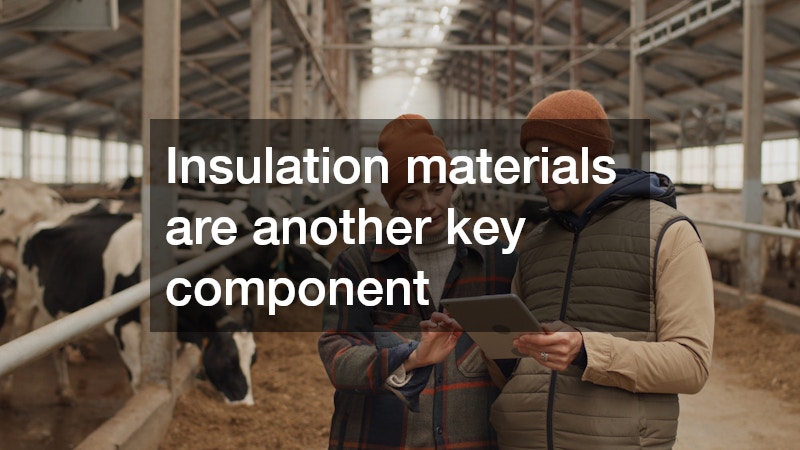
Explore the basic process that post frame building companies follow to construct high-quality structures efficiently. Understanding this process will provide you with valuable insights into how these buildings come to life, answer common questions, and help you make informed decisions for your own construction projects.
Post frame construction has gained popularity over the years due to its versatility and cost-effectiveness. It is increasingly becoming the preferred method for various types of buildings, from agricultural structures to commercial spaces.
By gaining insight into this construction method, you’ll better understand how post frame buildings fulfill specific needs while maintaining durability and aesthetic appeal.
Whether you are considering a post frame building for personal use or professional purposes, knowing the ins and outs of the building process can empower you. In the following sections, we’ll break down each component in detail to provide a comprehensive understanding of what makes post frame construction unique and efficient.
What Is Post Frame Construction?
Post frame construction is a method that utilizes large posts as the primary structural components. This innovative technique has roots in agricultural applications, where open spaces for storage and livestock were essential. The design allows for high ceilings and uninterrupted interior space, making it ideal for a variety of uses.
One of the major benefits of post frame construction is its engineering efficiency. The large posts, typically made from wood, serve as the main support, allowing builders to use fewer materials compared to traditional framing methods. This not only enhances structural integrity but can also lead to significant cost savings.
Additionally, post frame buildings often boast superior energy efficiency and insulation capabilities. The design allows for the incorporation of proper insulation techniques, which can result in lower utility bills and a more comfortable internal environment. In summary, post frame construction is a practical and resource-efficient building technique suitable for modern needs.
What Are the Steps Involved Building Process?
The post frame building process typically begins with extensive planning and design. In this initial phase, project goals are established, and blueprints outlining the structural layout are drafted. Collaborating with architects and engineers can ensure that the design meets local building codes and user requirements.
Once the plans are finalized, site preparation takes place. This involves clearing the area, leveling the ground, and preparing a foundation suited for the specific building design. After that, the posts are anchored into the ground, which marks the beginning of the construction phase.
The next significant step involves constructing the framing system, which connects the posts and gives the structure its shape. Roofing, siding, and interior features are subsequently added, making the building functional and aesthetically pleasing. The final inspections and adjustments ensure that the building meets safety standards and is ready for occupancy.
What Materials Are Used in Post Frame Construction?
In post frame construction, the primary material used is usually treated wood for the posts, which are critical for structural stability. The choice of wood is essential, as it needs to withstand both environmental factors and the weight of the building. Other materials, such as steel or concrete, may also be used in certain applications for enhanced durability.
Insulation materials are another key component, as they directly impact energy efficiency. Various types of insulation products can be utilized, ranging from fiberglass to spray foam, each offering unique benefits depending on the building’s requirements. Proper insulation contributes to year-round climate control, ensuring comfort and cost-effectiveness for inhabitants.
Furthermore, the exterior finishing materials, such as metal siding or wood panels, play a role in both aesthetics and performance. These elements are chosen not only for their appearance but also for their durability against the elements, providing protection for the structure while enhancing its visual appeal.
How Long Does a Post Frame Building Take to Construct?
The timeline for constructing a post frame building can differ based on multiple elements. Initial design and approval periods can take weeks to months, ensuring that all necessary details are addressed before construction begins. This step is crucial and should not be rushed.
Once construction commences, the timeline can range from a few weeks to several months. Factors such as the size of the building, weather conditions, and the availability of materials and labor can all influence the construction duration. It’s essential to have a flexible plan to adapt to these variables.
Effective project management can streamline the construction process, helping keep the project on schedule. Weekly progress updates and adjustments can aid in avoiding delays, ultimately leading to a successful completion within the projected timeframe.
In conclusion, understanding the basic process that post frame building companies follow can help both prospective owners and professionals in the construction industry. Knowledge of the steps involved—from planning to construction—equips you to engage in more meaningful discussions regarding project goals and expectations.
By comprehending the materials, costs, and timelines associated with post frame construction, you are better prepared to make informed decisions about your project. Engaging with professionals and understanding their methodologies can enhance the overall outcome of your building endeavor.
With this knowledge, you are better equipped to engage in discussions, make informed decisions, and appreciate the craftsmanship involved in post frame construction. These insights contribute to a more rewarding construction experience, whether for personal or commercial projects.



